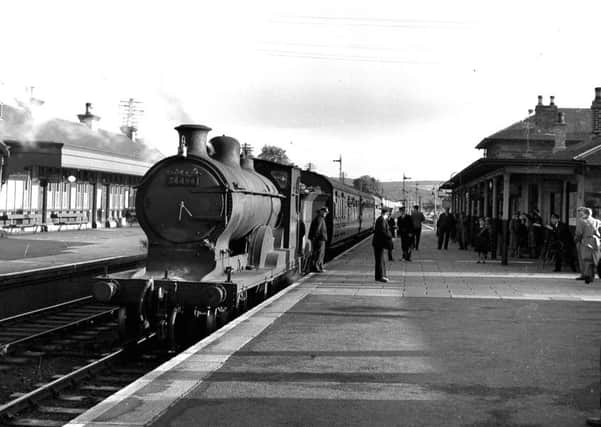Take a trip down the tracks to discover Fife's railwayana


Scotland’s Stations – a Traveller’s Guide, is a beautifully illustrated guidebook covering our historic rail stations.
Besides a wealth of historical data – known as railwayana – the book contains more than 400 colour photographs and is designed to double as a companion guide for visitors to discover lines that cross the country.
Advertisement
Hide AdAdvertisement
Hide AdThe book has been compiled by Bill Williams, a former journalist for The Glasgow Herald and Sunday Mail, a graduate of St Andrews University.
“When I discovered the amazing Highland lines – to Fort William, Mallaig, Kyle and the far north – I was concerned first of all at the threat of closure,” Bill said, explaining his inspiration for the book.
“I was then concerned for the survival of some of the incredible station buildings.
“So I thought, get the lines some publicity and try to save the stations, as they were in danger of demolition.”
The book focuses on eight local stations.
Advertisement
Hide AdAdvertisement
Hide Ad“Fife is particularly well served,” Bill said, “with Leuchars, Cupar, Ladybank, Markinch, Kinghorn, Burntisland, Aberdour and Inverkeithing all featured.”
In the north east is Leuchars Station. The original line was opened on May 17, 1848, and became the junction for St Andrews in July 1852.
It was closed to passengers when Leuchars Junction opened on June 1, 1878, but re-opened as Leuchars (old) six months later. It finally closed to passengers in October 1921.
Leuchars Junction opened on the current site in June 1878. On June 30, 1913, the station buildings at Leuchars Junction burned to the ground. This was widely believed to be arson by suffragettes.
The existing buildings are those rebuilt after 1913.
Advertisement
Hide AdAdvertisement
Hide AdAfter the closure of the Tayport line in 1967 and the St Andrews branch on January 1969 the station ceased to be a junction and the two bays were filled in.
The station was subsequently renamed Leuchars (for St Andrews).
Cupar, Ladybank and Markinch Stations were all opened by the Edinburgh and Northern Railway in 1847 and are still in operation today.
The opening of Kinghorn railway station in 1846 dramatically changed the town, much like the opening of Burntisland station a year later in 1847.
Advertisement
Hide AdAdvertisement
Hide AdThen, in 1890 with the opening of the Forth Bridge, it was replaced by a new station which still serves the town to this day.
Inverkeithing Station opened in 1877, at the same time as the tracks for the Dunfermline and Queensferry Railway.
A bit later than other Fife stations, the railway didn’t come to Aberdour until 1890, with the building of the line east from the newly opened Forth Bridge.
Scotland’s Stations is billed as a traveller’s guide, allowing people to visit the buildings ... but it’s not just for trainspotters!
Advertisement
Hide AdAdvertisement
Hide AdFor the Guidelines section contains a wealth of insider information on things to see and do and places to stay.
Bill explained: “Actually, my original intention was for the book to act as a general guide to the places served.
“For this reason there is a lot of non-rail buff information – in fact it is meant to be a help to people seeing Scotland by rail – on rail passes, on special excursion trains and those just taking the train.
“For people not travelling by train, each station entry has its own postal code listed in the title, to make life easier for SatNav travellers.”
Of all the stations featured, is there a favourite?
“It’s really difficult to pick one, added Bill.
Advertisement
Hide AdAdvertisement
Hide Ad“There are some really wacky ones – like Corrour in Fort William, with no public road access or Kinbrace in the middle of nowhere at the top of Scotland.
“Dunrobin has a picturesque summer house waiting room, while Invergordon is literally covered in colourful murals.
“And, of course, there’s Glenfinnan which has its own dining and sleeping cars, still in use, and even its own resident snow plough.”
Scotland’s Stations – A Traveller’s Guide is available from local stockists or online at www.northernbooks.co.uk.